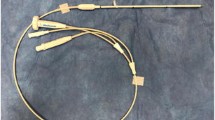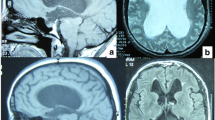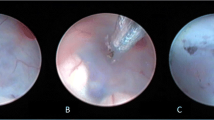Abstract
A retrospective chart review was performed on 54 patients who had undergone endoscopic III ventriculostomy (E3V) in the past 6 years. Patient charts were reviewed to establish age at the time of operation, sex, preoperative diagnosis, preoperative shunt procedures, success or failure of the E3V, duration of success, and complications. Success of an E3V was determined by the resolution of preoperative symptoms and avoidance of a CSF shunt. The most recent clinic visit with adequate documentation of signs and symptoms of hydrocephalus was used as the last date of follow-up. The overall success rate was 74%. Children over the age of 3 years with an acquired CSF obstruction had a significantly greater probability of successful treatment (P=0.05). Younger children, especially those with hydrocephalus attributable to obstruction of the arachnoid villi, as in intraventricular hemorrhage (IVH), were less likely to benefit from E3V.
Similar content being viewed by others
Author information
Authors and Affiliations
Additional information
Received: 2 October 1999 Revised: 12 January 2000
Rights and permissions
About this article
Cite this article
Scarrow, A., Levy, E., Pascucci, L. et al. Outcome analysis of endoscopic III ventriculostomy. Child's Nerv Syst 16, 442–444 (2000). https://doi.org/10.1007/s003810000307
Issue Date:
DOI: https://doi.org/10.1007/s003810000307




